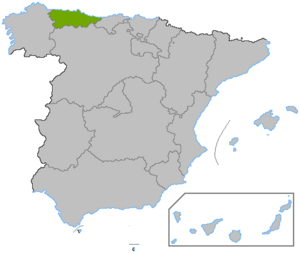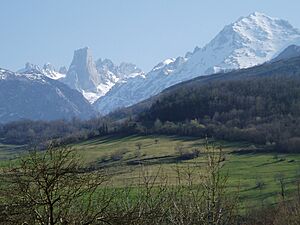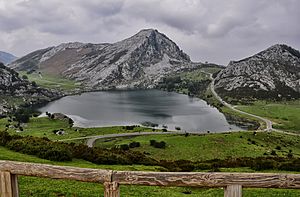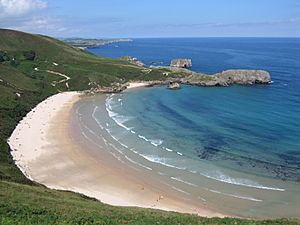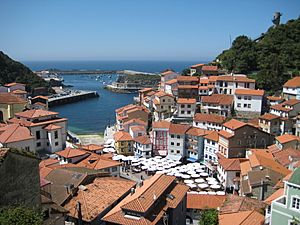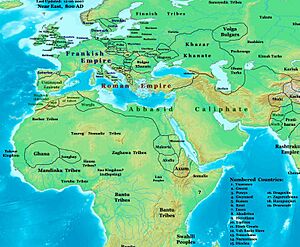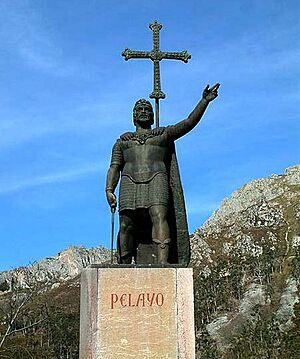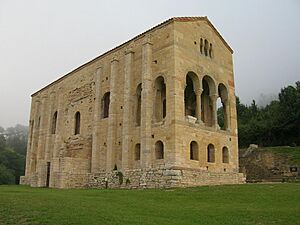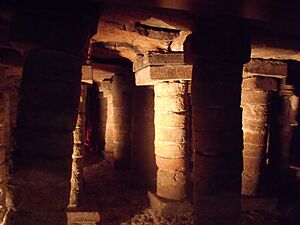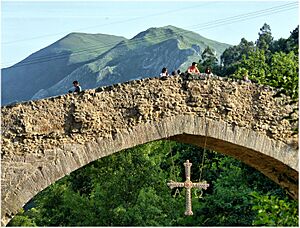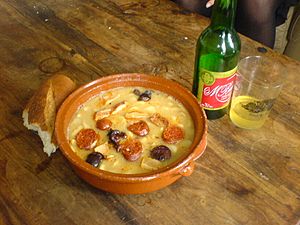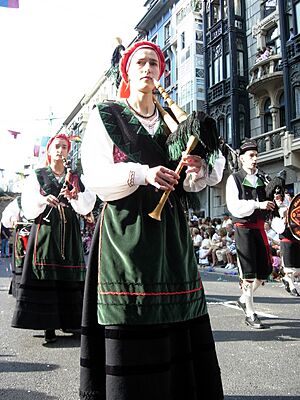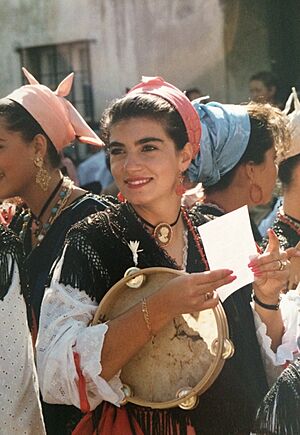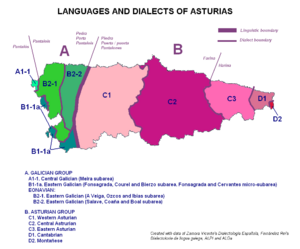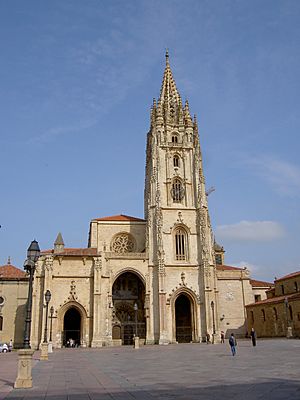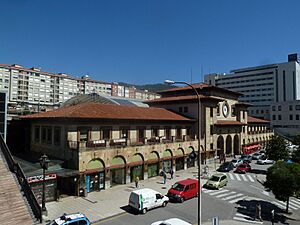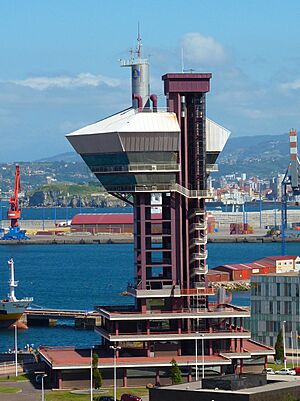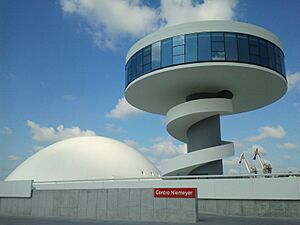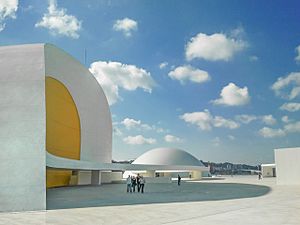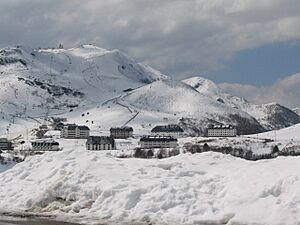Asturias facts for kids
The Principality of Asturias (Spanish: Principado de Asturias, Asturian: Principáu d'Asturies) is a special region in Spain. It's located on the northern coast, right next to the Cantabrian Sea. Imagine a place where green mountains meet beautiful beaches! The capital city is Oviedo, but Gijón is the biggest city. Asturias even has its own airport, connecting it to a few places in Europe. This lovely region shares its borders with Galicia, León, and Cantabria. Long ago, it was even a kingdom called the Kingdom of Asturias during the Middle Ages.
Contents
Discovering Asturias
Asturias is a fantastic place with a rich history, amazing nature, and unique traditions. It's known for its stunning landscapes, from towering mountains to sandy beaches, and its delicious food.
Nature's Playground
Asturias is often called "Natural Paradise" for a good reason! It has incredible natural beauty.
Majestic Mountains and Lakes
The region is home to parts of the Picos de Europa mountain range. Here, you can find breathtaking peaks like Picu Urriellu, which is popular for climbing. There are also beautiful glacial lakes, like the Lakes of Covadonga, which are perfect for hiking and enjoying nature.
Stunning Coastline and Beaches
Asturias has a long coastline with many different beaches. Some are wide and sandy, while others are hidden coves surrounded by cliffs. Places like Torimbia beach in Llanes are famous for their natural beauty.
Green Valleys and Parks
Beyond the mountains and beaches, Asturias has lush green valleys and natural parks. These areas are great for spotting wildlife and exploring traditional villages. For example, Somiedo Natural Park is known for its unique traditional buildings called Teitos.
A Journey Through History
Asturias has a long and fascinating history, dating back to Roman times and even earlier.
The Ancient Kingdom
One of the most important parts of Asturian history is the Kingdom of Asturias. This kingdom was formed in the 8th century by Pelagius, who became its first king. It was a very important kingdom during the early Middle Ages in Spain. Many ancient churches in Asturias, like Santa María del Naranco, are among the oldest in Europe.
Roman Influence
Before the kingdom, the Romans were in Asturias. You can still see signs of their presence today. For example, in Gijón, there are Roman baths called thermae. There's also a famous Roman Bridge in Cangas de Onís.
Culture and Traditions
Asturias has a vibrant culture with its own language, music, and delicious food.
Delicious Food and Drink
When you visit Asturias, you must try Fabada asturiana. It's a hearty bean stew, perfect for a cool day. Another famous drink is sidra (cider), which is poured in a special way to make it bubbly.
Music and Festivals
Music is a big part of Asturian culture. The Gaita asturiana, a type of bagpipe, is a traditional instrument you'll often hear at festivals. People also wear beautiful traditional dresses during celebrations.
Unique Language
Besides Spanish, many people in Asturias also speak Asturian (or Bable). It's a language with a long history, and efforts are made to keep it alive.
Cities and Landmarks
Asturias has several important cities and interesting places to visit.
Oviedo, the Capital
Oviedo is the capital city. It's known for its beautiful old town and the impressive Oviedo Cathedral. The city also has a historic railway station.
Gijón, the Big City
Gijón is the largest city in Asturias and an important port. Its port, El Musel, is a busy place. Gijón is also home to the Centro Niemeyer, a modern cultural center designed by the famous architect Oscar Niemeyer.
Other Cool Places
- Covadonga: This place is very special because of the Holy Cave of Covadonga, a shrine built into a cave, and its connection to the start of the Kingdom of Asturias.
- Cudillero: A picturesque fishing village with colorful houses built into the hillside, looking out over the sea.
- Valgrande-Pajares: If you love winter sports, this is a popular ski resort in Asturias.
Famous Asturians
Asturias has been home to many notable people throughout history and in modern times.
- Gaspar Melchor de Jovellanos: An important writer, philosopher, and politician from the 18th century.
- José Andrés: A world-famous chef who has brought Spanish cuisine to many parts of the world.
- Queen Letizia of Spain: The current Queen consort of Spain was born in Oviedo, Asturias.
- Fernando Alonso: A highly successful Formula 1 racing driver.
Images for kids
See Also
 In Spanish: Asturias para niños
In Spanish: Asturias para niños


